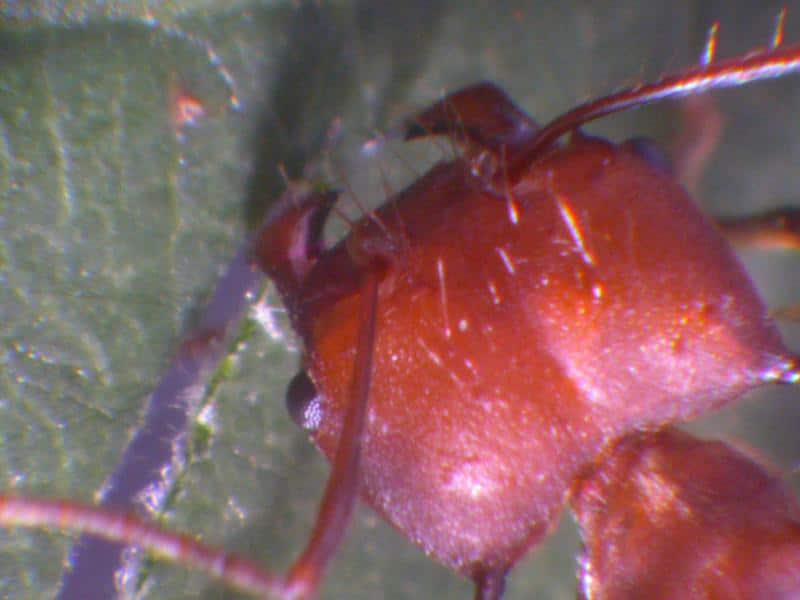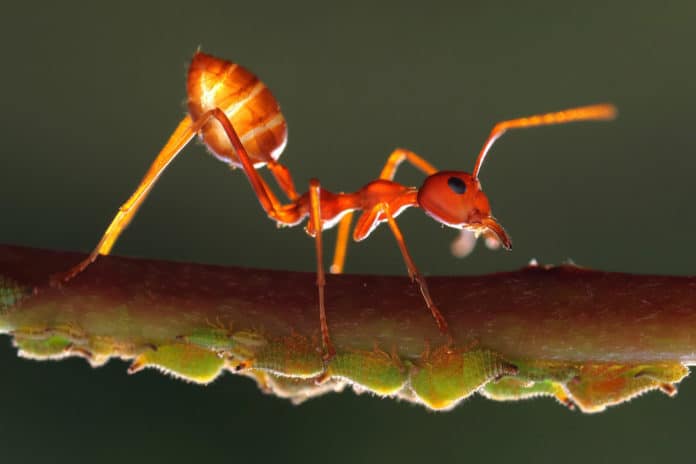A new study reveals the secret behind ant teeth super strength. It shows that ant’s teeth contain atoms of zinc. The atoms are arranged in such a way that it maximizes the cutting efficiency and maintains tooth sharpness.
A research team conducted the study at the University of Oregon and the U.S. Department of Energy’s (DOE’s) Pacific Northwest National Laboratory (PNNL).
Ants teeth are also known as mandibular teeth, as they are attached outside of their mouths. Their teeth are made of a network of material that tightly binds individual atoms of zinc.
The total effect is a mandible that packs more than 8 percent of the tooth weight with zinc.

Using newly developed techniques, scientists measured the hardness, elasticity, fracture energy, abrasion resistance, and impact resistance of teeth on a miniature scale.
But, doing so doesn’t reveal the structure of the materials that make up ant teeth and other microscopic animal tools, especially at the atomic scale. Hence, scientists used a specialized microscope technique called atom probe tomography.
Using a focused ion beam microscope, scientists could take a tiny needle sample from the tip of an ant tooth. They then imaged that sample using atom probe tomography- revealing how individual atoms are arranged near the tip of an ant tooth.
The technique also recorded the nanoscale distribution of zinc atoms in the ant tooth.
PNNL materials scientist Arun Devaraj said, “We could see that the zinc is uniformly distributed in the tooth, which was a surprise. We were expecting the zinc to be clustered in nano-nodules.”
Scientists noted, “Because these biomaterials can be sharper, they make it possible for the animals to use 60 percent or even less of the force that they would have to use if their tools were made of materials similar to that found in human teeth. Because less force is required, their smaller muscles spend less energy. These advantages may explain why every spider, ant, other insects, worms, crustaceans, and many other groups of organisms have these specialized tools.”
Schofield said, “Human engineers might also learn from this biological trick. The hardness of ant teeth, for example, increases from about the hardness of plastic to the hardness of aluminum when the zinc is added. While there are much harder engineering materials, they are often more brittle.”
Devaraj said, “Learning from nature is one way of understanding what makes materials stronger and more damage-resistant. By studying steel microstructure at the atomic scale, we can better understand how altering the composition of materials changes its damage resistance, specifically stress corrosion resistance and behavior over time. This is especially important for designing structures like nuclear power plants that need to withstand aging for many decades.”
Journal Reference:
- Schofield, R.M.S., Bailey, J., Coon, J.J. et al. The homogenous alternative to biomineralization: Zn- and Mn-rich materials enable sharp organismal “tools” that reduce force requirements. Sci Rep 11, 17481 (2021). DOI: 10.1038/s41598-021-91795-y
